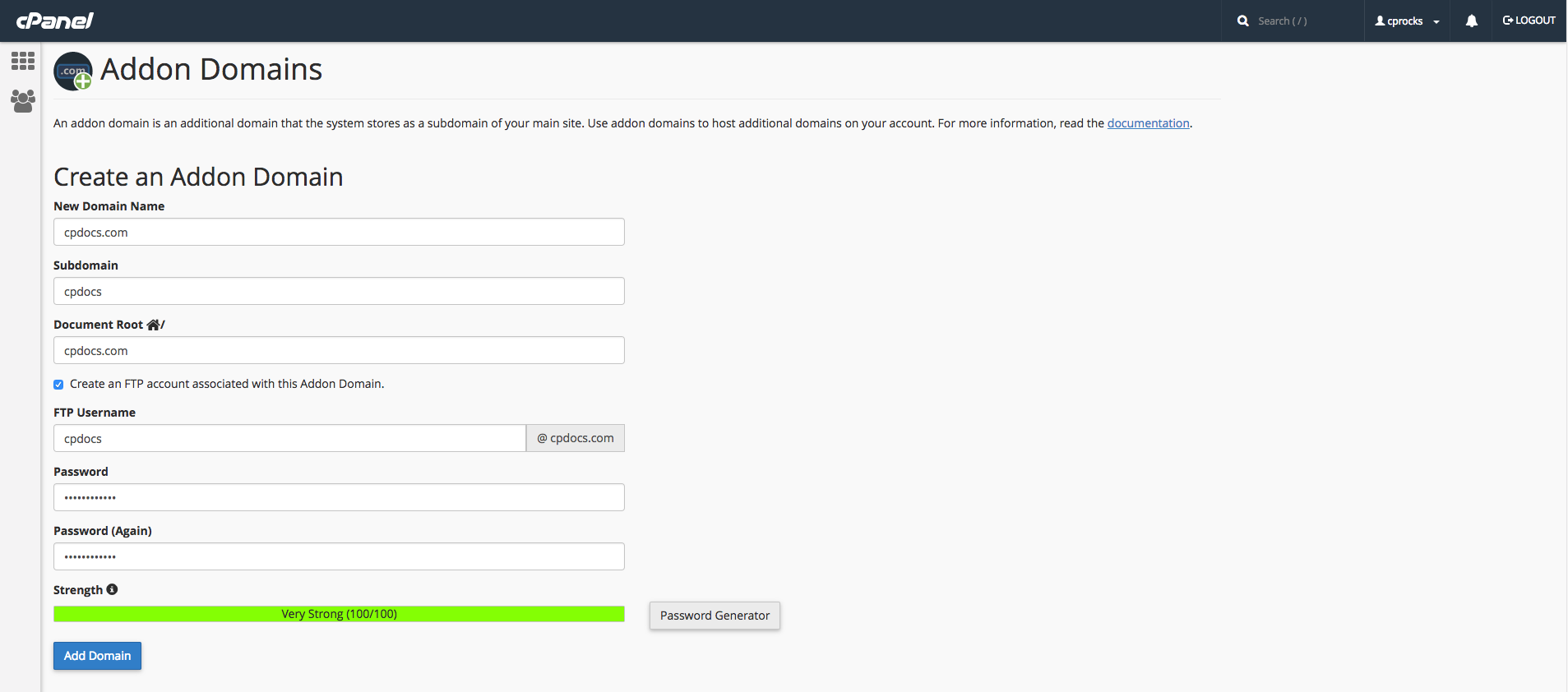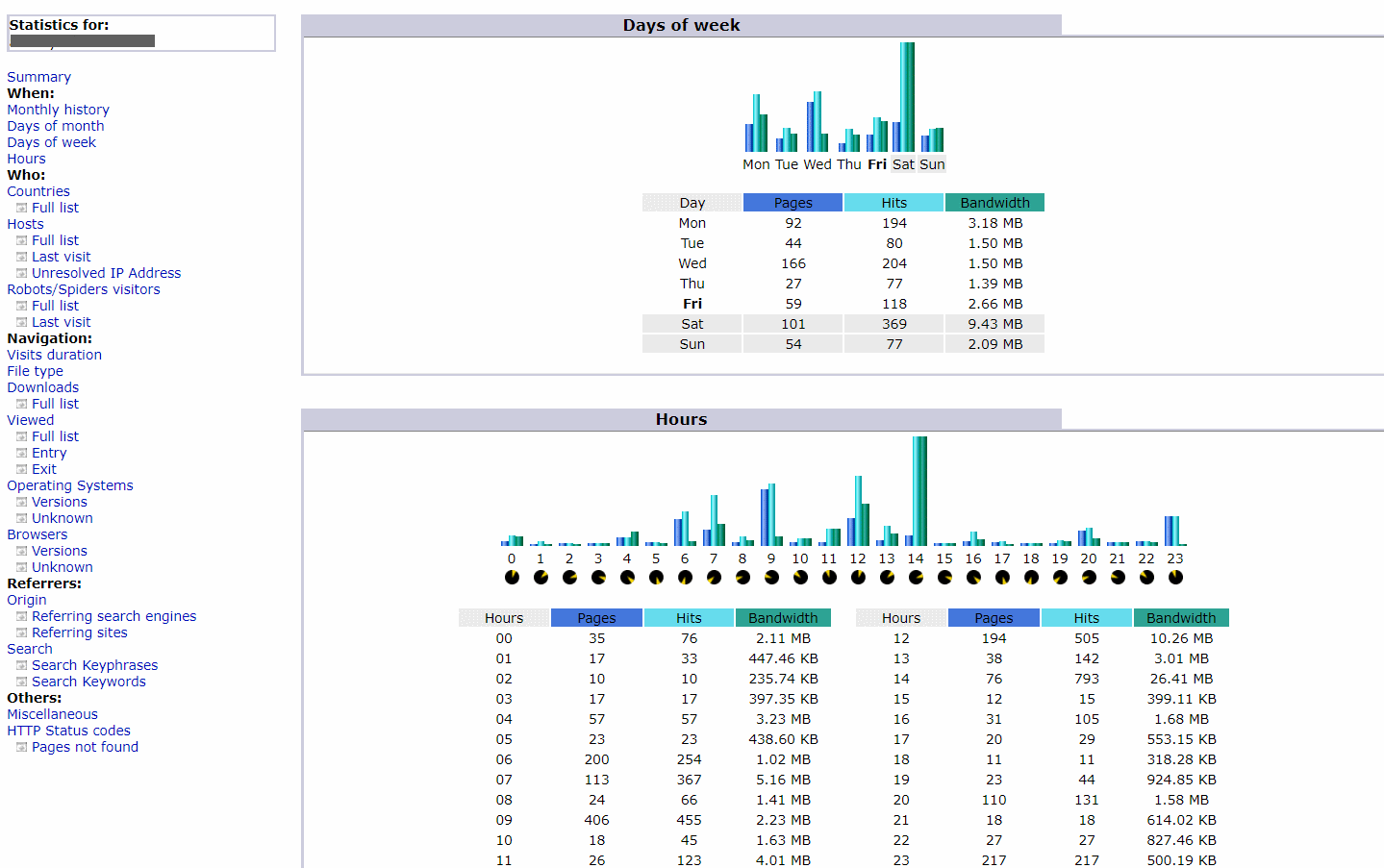
- AWSTATS FOR MULTIPLE DOMAINS INSTALL
- AWSTATS FOR MULTIPLE DOMAINS UPDATE
- AWSTATS FOR MULTIPLE DOMAINS MANUAL
- AWSTATS FOR MULTIPLE DOMAINS FULL
- AWSTATS FOR MULTIPLE DOMAINS FREE
Repeat this line, updating the domain.tld value for any site you want continually updated. */10 * * * * root /usr/lib/cgi-bin/ -config=domain.tld -update >/dev/null
AWSTATS FOR MULTIPLE DOMAINS UPDATE
To update every ten minutes we’ll add the following line: I have seen minimal system load even when updating a dozen sites on that interval. What I have done is added a line to my /etc/crontab file telling AWStats to update every ten minutes. This will allow you to have your site statistics updated on a regular basis, not requiring intervention on your part. The last thing you’ll probably want to do is update your statistics via cron. You should now be able to access your statistics using:Īssuming you didn’t get any errors during your stats generation, and Apache2 didn’t complain when you restarted the service, you should see statistics at this point. Once this is saved you should be able to restart Apache2 and we’ll should be able to access our stats. This is basically creating some access aliases, and defining the cgi-bin paths, etc. Options ExecCGI -MultiViews +SymLinksIfOwnerMatch What I did was create a new file in the /etc/apache2/conf.d/ directory called awstats, and filled it with the following content:Īlias /awstatsclasses "/usr/share/awstats/lib/"Īlias /awstats-icon/ "/usr/share/awstats/icon/"Īlias /awstatscss "/usr/share/doc/awstats/examples/css" This is generally my preferred method.Īnf already has a line near the botton Include /etc/apache2/conf.d/, which will read anything in there as additional data. The way I did this was by using an Include in my nf, instead of cluttering up the default config file. We’ll need to configure Apache2 to show us these stats. Each time it is run after that will be minimal, as it only updates the information, but the initial generation can take some time.Īt this point our statistics should be generated (if not, go back and double check you haven’t missed anything!), but we need a way to see them. You should see some output here, and depending on the size of your logs it’ll take anywhere from a few seconds to a few minutes or hours. What this will do is scan the /etc/awstats folder for anything of the pattern awstats + domain.tld + conf, reading that config to generate its output. Sudo /usr/lib/cgi-bin/ -config=domain.tld -update Once you’ve made these changes you’ll want to build your initial statistics, which will be generated from the current logs on your machine.

I created a unique file, using the syntax awstats + domain.tld + conf for each of the domains hosted on my server. This can be done by moving or copying the /etc/nf, and giving it a more unique name: The first step is creating an nf file for your domain. For more information on custom log locations for virtual domains see my previous post, Configuring Virtual Hosting on Ubuntu with Apache2. The only requirements here are that you have access to the apache2 logs, or that you have custom log locations for each of your virtual domains (if used). I configured my system manually, which I will outline below.
AWSTATS FOR MULTIPLE DOMAINS MANUAL
The rest of this tutorial will discuss manual configuration, but if anyone can offer feedback concerning the configure script I’m sure many would be interested. Sudo perl /usr/share/doc/awstats/examples/awstats_ I did not use this personally, but if you’d like to try it you can run:
AWSTATS FOR MULTIPLE DOMAINS INSTALL
This will install the basic files, but there is still a bit of configuring to do, so we’ll dive into that next.įrom the tutorials that I found elsewhere in my searching there is a awstats_ file that will try to configure it for you. Ubuntu has the AWStats package available in the repositories, which we can install with: I’d like to share the steps I took for installing and configuring AWStats on my Ubuntu Server. I had mentioned 5,000 the other day, which I have long since surpassed based on AWStats output.

It actually is showing me that I had much more traffic than I thought.

It appears to be running properly and pulling in a lot more data than statcounter ever did.
AWSTATS FOR MULTIPLE DOMAINS FULL
I also run the server so I have full access to the server logs, why not just use those directly. Having to access an external site and javascript wasn’t helping.
AWSTATS FOR MULTIPLE DOMAINS FREE
I had previously been using statcounter, a free stat service, but I had noticed that it was one of the causes of slowdown on my page loads. Last nite I sat down and configured AWStats on my Ubuntu 7.10 server.


 0 kommentar(er)
0 kommentar(er)
